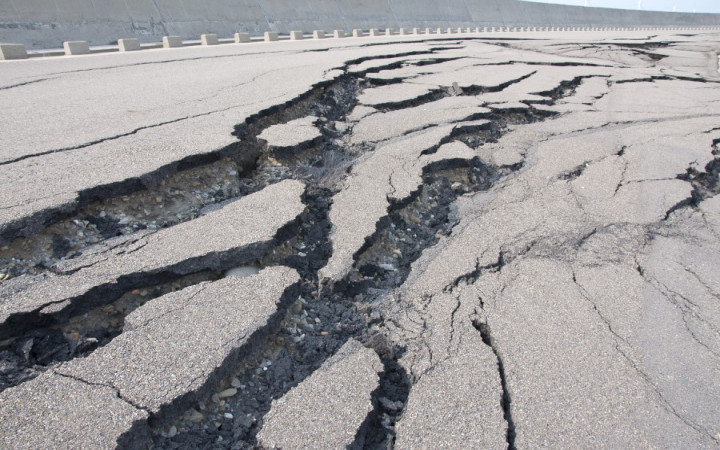Today’s Wonder of the Day was inspired by caleb. caleb Wonders, “why do earthquakes happen” Thanks for WONDERing with us, caleb!
Isn't there just something so comfortable about the solid ground under your feet? After all, part of the thrill of sports like ice skating and roller skating is the slightly out-of-control feeling you get when you're sliding (or rolling) along.
But what if the ground under your feet wasn't so solid? What if it moved and shook and tossed you about like a rag doll? That's what some people experience from time to time when the earth under their feet shifts suddenly and unexpectedly. What are we talking about? Earthquakes, of course!
Although the ground seems extremely solid, it's actually made up of gigantic pieces of rock that slowly, but constantly move. These pieces of Earth's crust — what scientists call tectonic plates — collide with and rub against one another.
Every once in a while, the edges of tectonic plates will break or slip suddenly, releasing enormous bursts of energy in the form of earthquakes. In fact, earthquakes happen constantly, every day, all around the world.
Many earthquakes are just too small to be felt by our senses. However, the U.S. Geological Survey estimates that as many as 1.3 million earthquakes that can be felt by humans may occur each and every year!
Occasionally, large earthquakes will occur, releasing energy in the form of seismic waves more powerful than thousands of atomic bombs. When this happens, the results can be devastating. For example, a powerful earthquake off the coast of Japan in 2011 damaged thousands of buildings and caused the deaths of over 20,000 people.
Earthquakes have been around since the beginning of time. Scientists have really only begun to understand and measure them in the last 100 years or so, though. Today, scientists around the world use sophisticated seismic monitoring equipment to detect and measure earthquakes. One day, they may be able to use that information to predict when major earthquakes are likely to occur.
Scientists who study earthquakes — called seismologists — concentrate on areas of Earth's crust where tectonic plates are moving in different directions. They call these areas fault lines. By studying fault lines, they hope to understand earthquakes better and learn to predict when they might occur.
Seismologists have learned that most earthquakes occur along established fault lines. Groups of fault lines combine to form fault zones. Some of the most extensive and active fault zones are given names, such as the San Andreas Fault in California and the New Madrid Fault that extends over 120 miles through several Midwestern states, including Illinois, Missouri and Arkansas.




